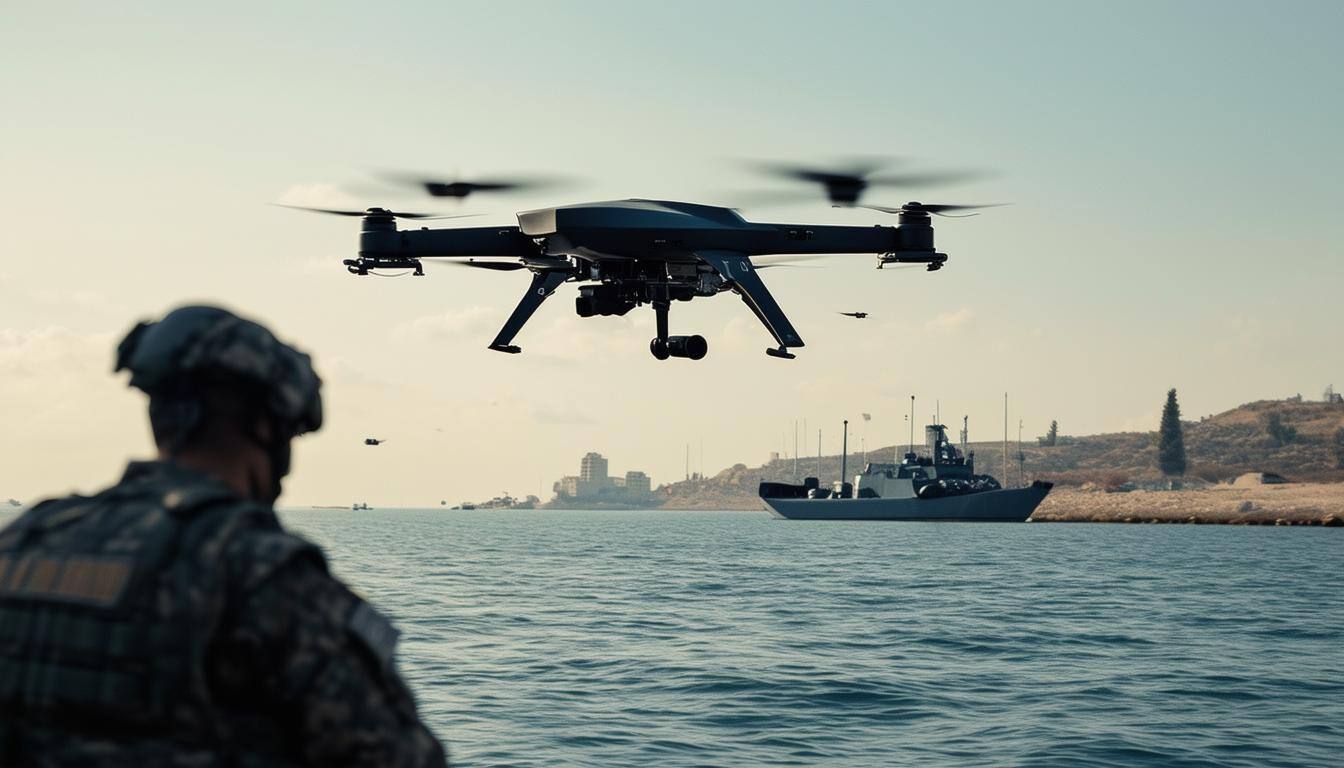The ongoing conflict between Ukraine and Russia has transformed the Black Sea into a focal point for maritime warfare, with Ukraine leveraging naval drones to contest Russian naval dominance, especially around Crimea's strategic Sevastopol port.
The use of these unmanned drones represents a significant evolution in naval tactics, enabling Ukraine to strike at Russian assets in fortified areas. An October 2022 attack on the Black Sea Fleet in Sevastopol, while not resulting in any sunken vessels, highlighted the drones’ potential to challenge Russia's maritime superiority. These drones, deployed in swarms, pose a significant threat due to their stealth capabilities, making them difficult to detect and counteract effectively.
In response, Russia has undertaken extensive efforts to enhance its coastal defenses. This includes deploying physical barriers such as nets and pontoons, advanced underwater detection systems, and even utilizing trained dolphins to spot divers near its ports. Additionally, Russia has adopted camouflage tactics that hark back to World War I, painting sections of its warships in darker colors to obscure them from drone operators and satellite imaging. These countermeasures illustrate Russia's recognition of the heightened threat posed by Ukraine’s innovative maritime strategy.

Geography adds another layer of complexity to the Crimean conflict. The peninsula's limited land access and narrow corridors make it challenging to resupply and reinforce, increasing the strategic importance of maritime routes. Control over the Black Sea’s shipping lanes has implications not only for military logistics but also for the economic lifelines of both nations, with significant consequences for global trade and security. Ukraine’s naval drone operations have, therefore, emerged as a critical element in its broader strategy to regain control of Crimea and disrupt Russian military logistics.
The introduction of naval drones by Ukraine has fundamentally altered the conflict's dynamics in the Black Sea, signaling a shift from traditional naval engagements to more asymmetric and technologically driven warfare. The use of drones is reshaping the maritime battle space, forcing both sides to adapt quickly to new tactics and technologies. For Ukraine, the drones offer a cost-effective means to counter Russia's superior naval power, while for Russia, adapting to these emerging threats requires significant investment in defense measures and new strategies.
As the war persists, the Black Sea remains a critical arena, not just for military engagements but for broader geopolitical and economic stakes. The escalation of maritime operations in this region underlines its importance as a strategic chokepoint, with the potential to impact global supply chains, energy markets, and regional security dynamics. The continued development and deployment of naval drones by Ukraine suggest that this form of warfare will play an increasingly central role in the ongoing struggle for control over the Black Sea and the future of the Crimean Peninsula.

Source: Marine Link






